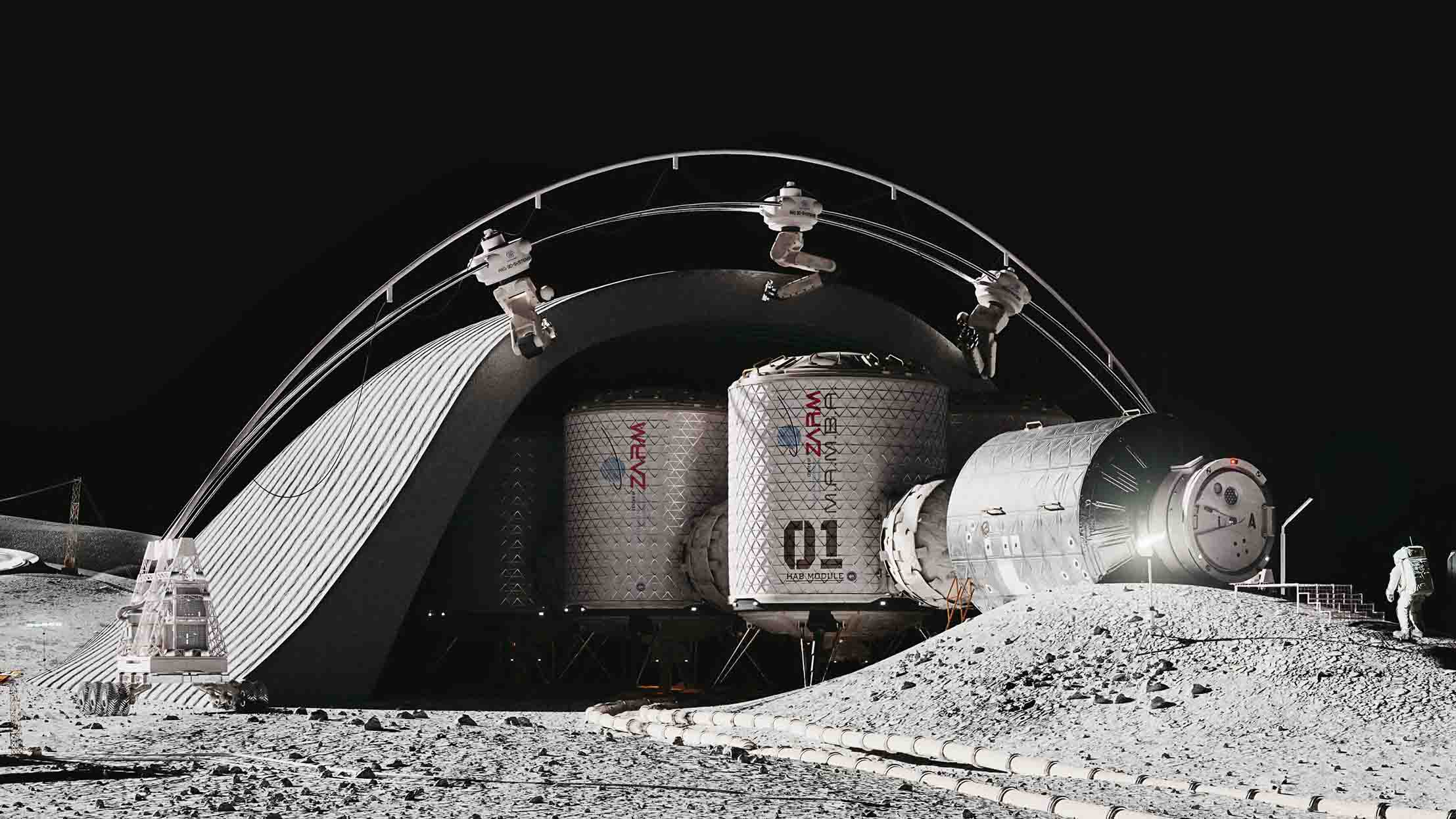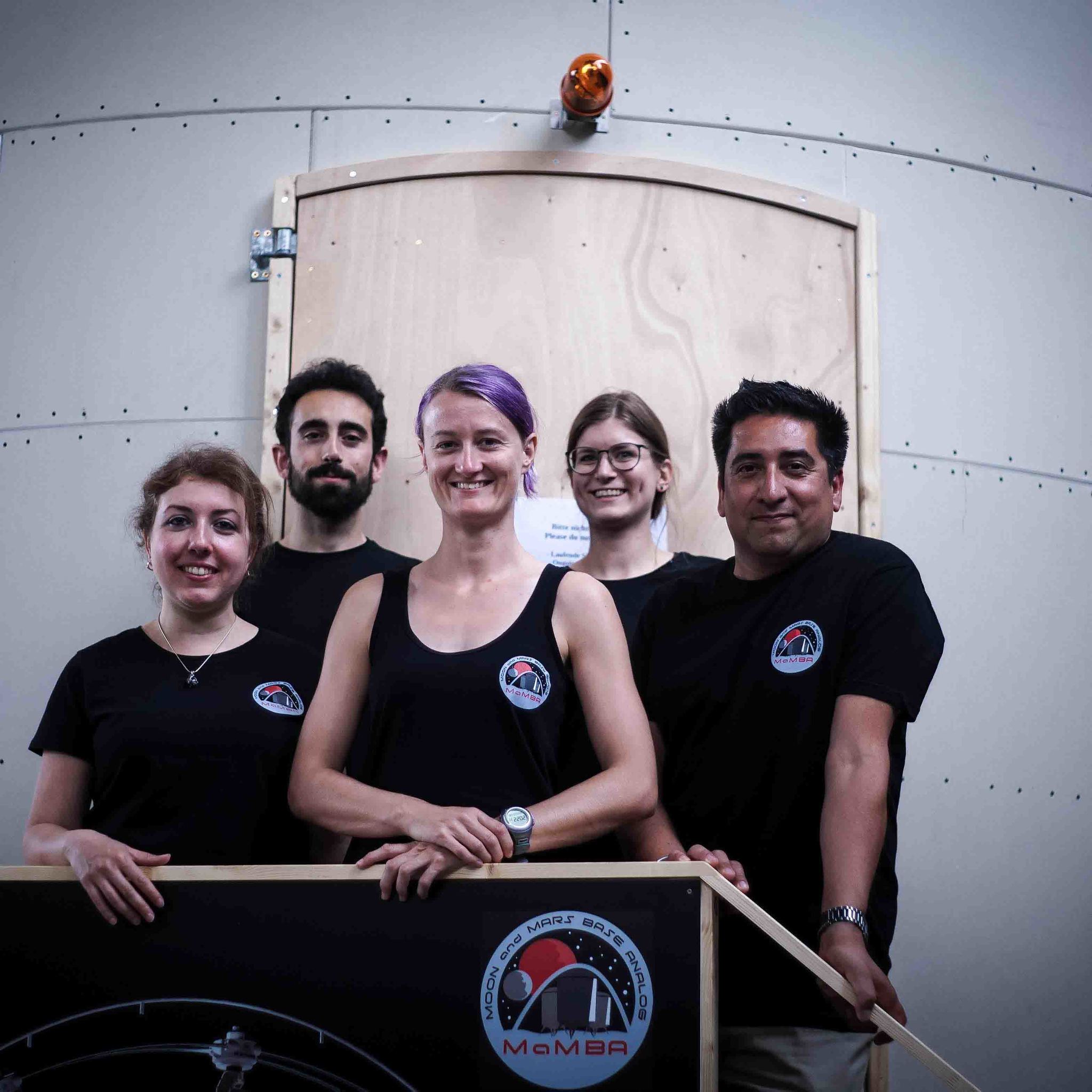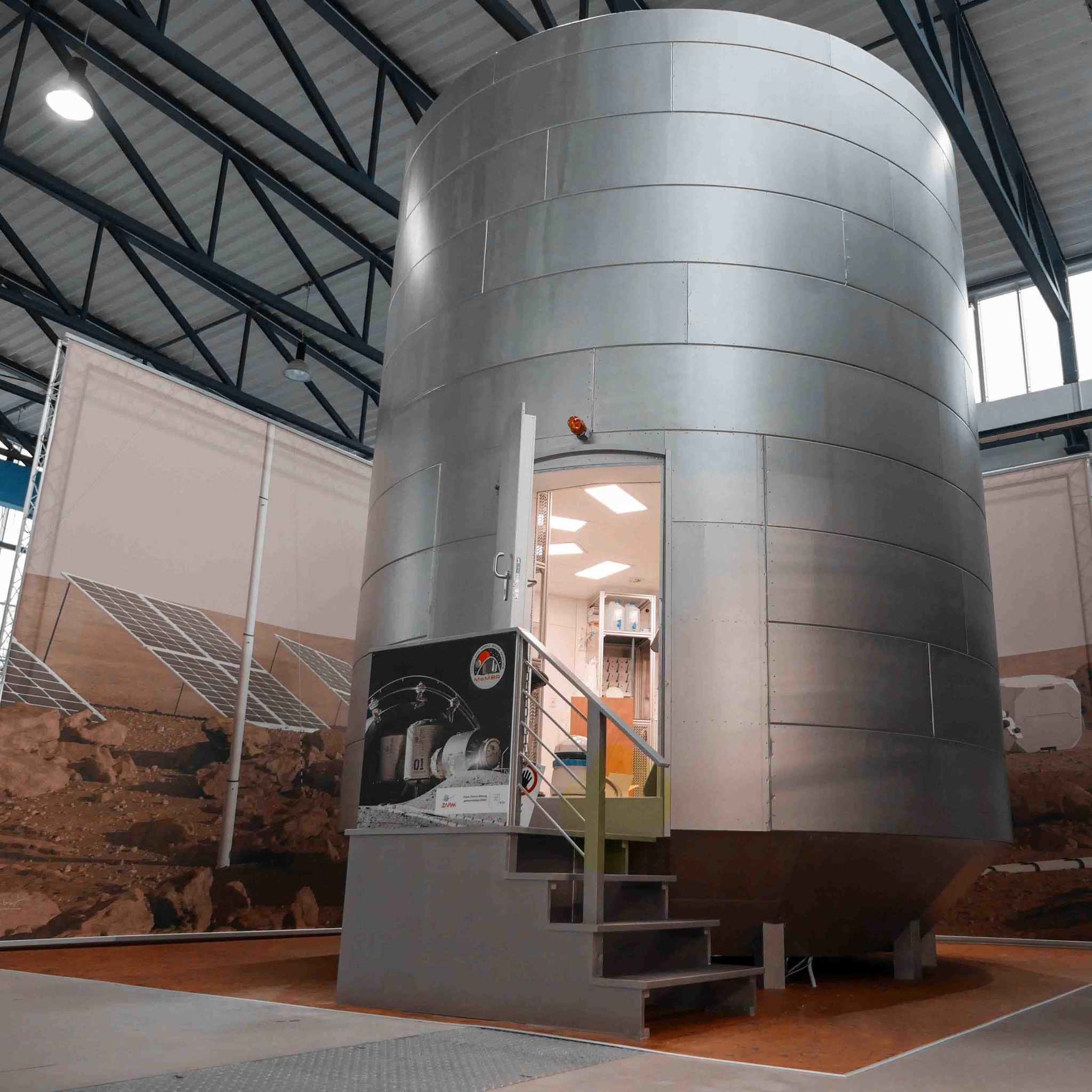
The Workplace of the Future – Mars
Humans are striving to reach Mars – but is survival even possible in such a barren place? What would the habitat and the living and working space need to be like?
That is exactly what the geophysicist Christiane Heinicke from the Center of Applied Space Technology and Microgravity (ZARM) at the University of Bremen is researching.
In the “Moon and Mars Base Analog (MaMBA)” project, the researcher does not only want to create a construction that will withstand the actual environmental conditions on the Moon and Mars. It is also important to her that a crew can cope with the size and design of the rooms during a real long-term mission. Two scientist teams each agreed to participate for a working week and have tested the laboratory module.

Close Quarters
They were extremely cramped: The cylindrical demo version that Heinicke had constructed with her team in the ZARM laboratory hall only offered the 4-person researcher team eight square meters to live in. Yet, despite the small size, the team agrees that the space was sufficient. “At the beginning, we were skeptical if we would be able to work effectively with the restricted working space and the equipment fitted on different levels – but it works really well,” says a participant. However, this is only the case if the furnishings are fitted flexibly and there are not too many scientific instruments within the module.

Up until now, with regard to simulations undertaken to replicate living and working under the conditions on Mars the focus was on the psychological findings that stemmed from living in such a restricted space. Christiane Heinicke’s team is now daring to bridge the gap between architecture and engineering skill and thus the designing, constructing, testing, and optimizing of the space. Future astronauts should not only have the possibility to survive on the Moon and Mars but should be able to lead a comfortable life there. The architecture, geometry, and interior design of the living space are to be created to perfectly fit to human needs.
Tracking Movement
Will it work? This question will be answered using recordings of the participating teams. Said recordings show each participant’s movements within the module. In order to monitor each participant’s wellbeing, there are sensors distributed throughout the module: for example there are temperature and pressure sensors on the walls and also pulse sensors that each of the scientists have to wear. They were also interviewed. The results are currently being thoroughly analyzed.
More to MaMBA
More information is available at ZARM